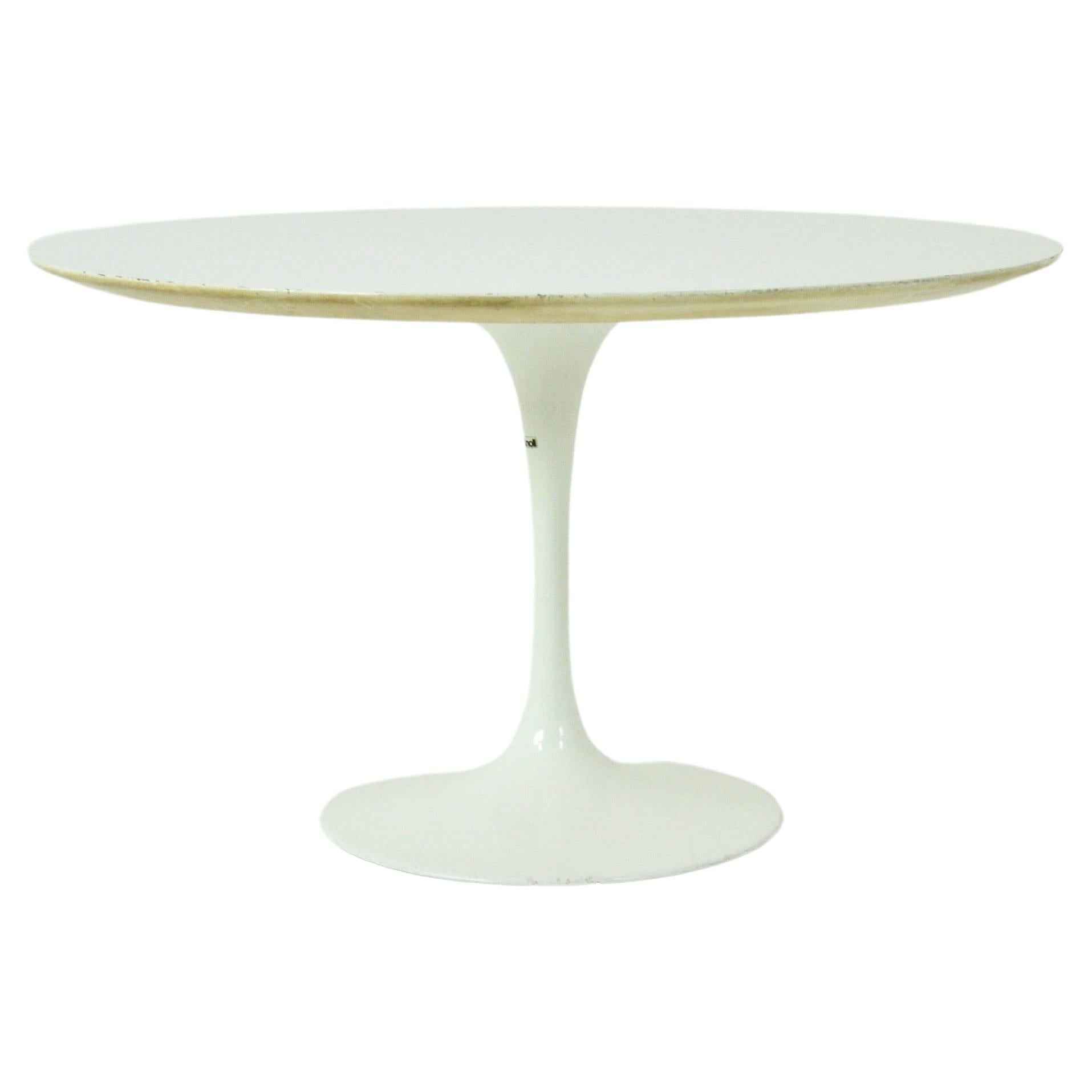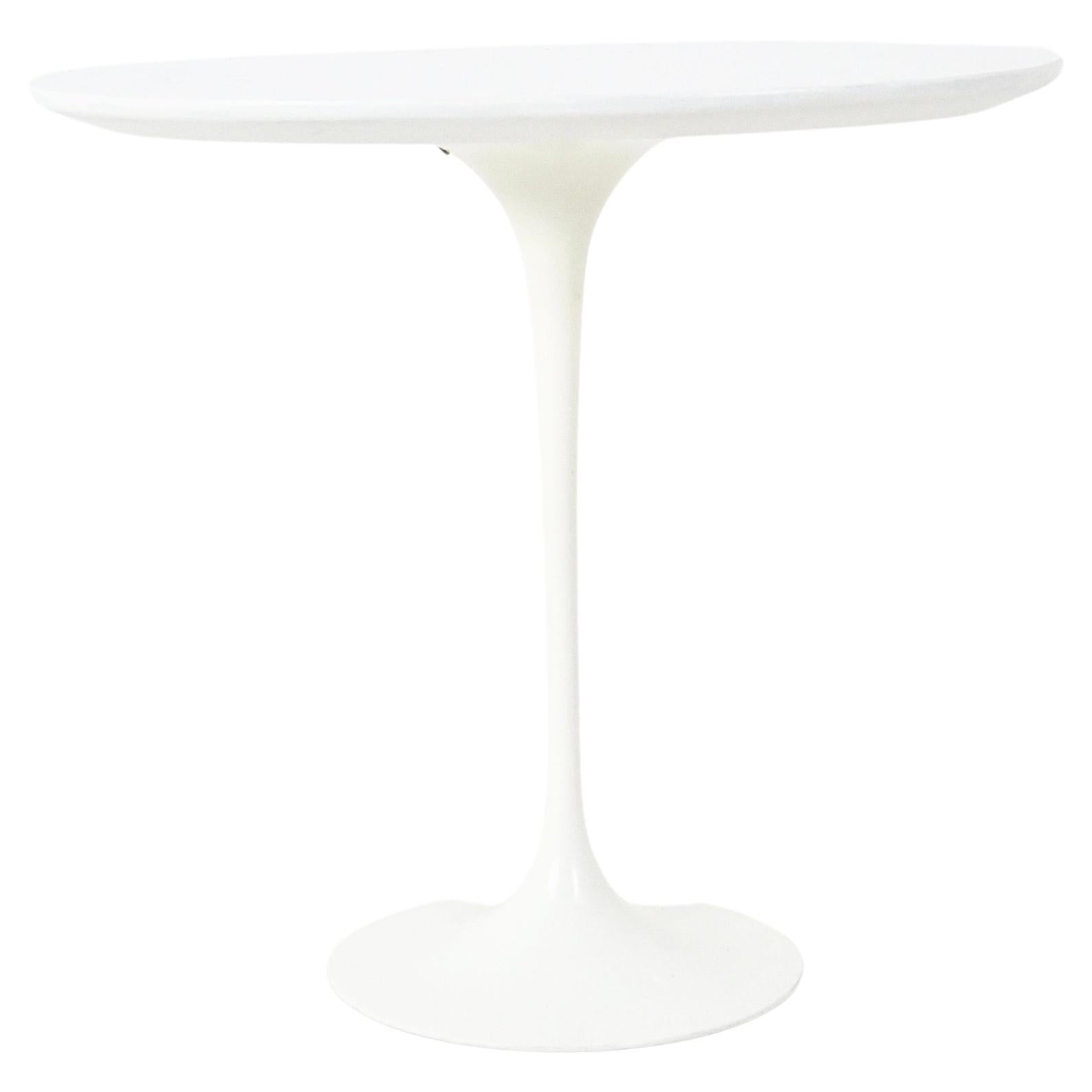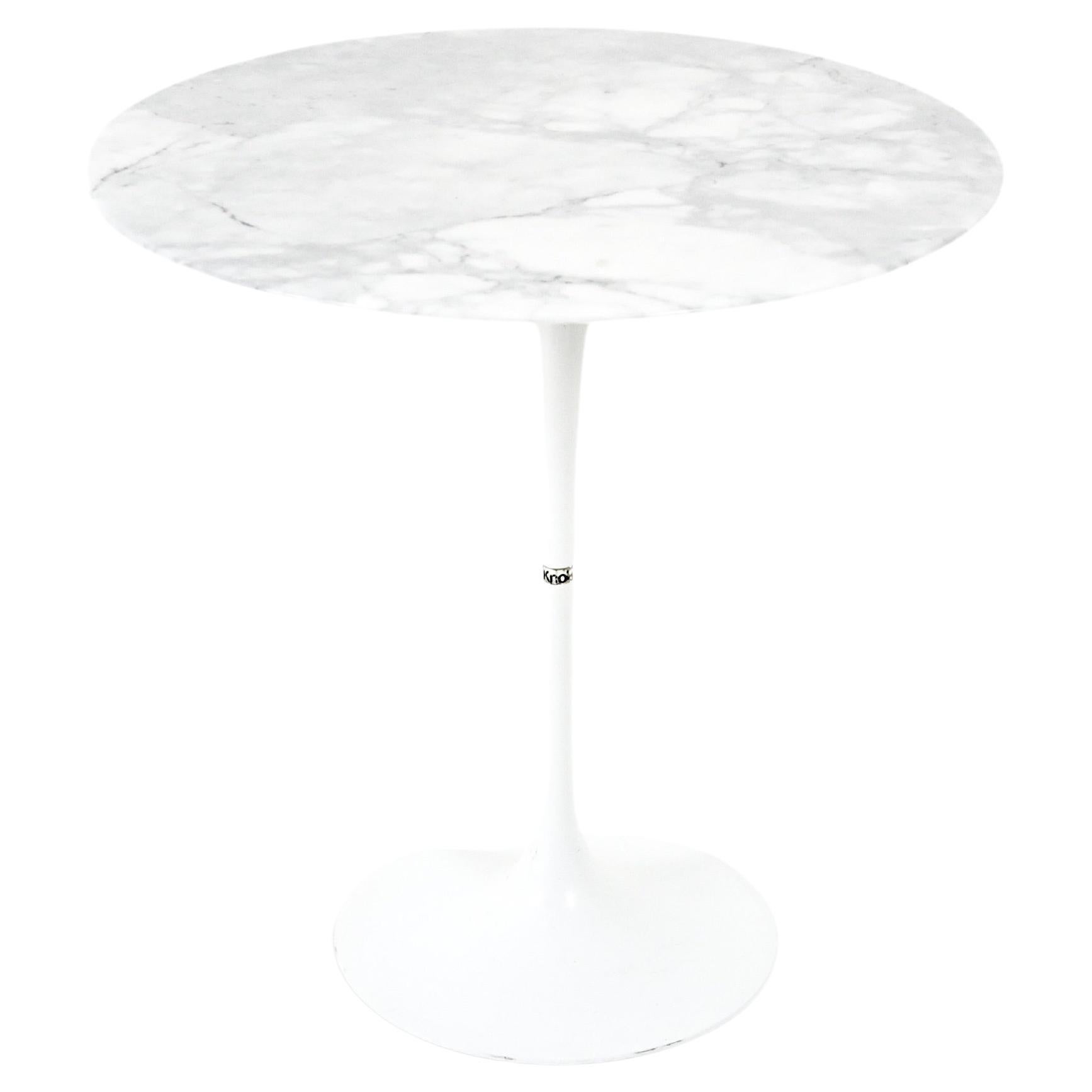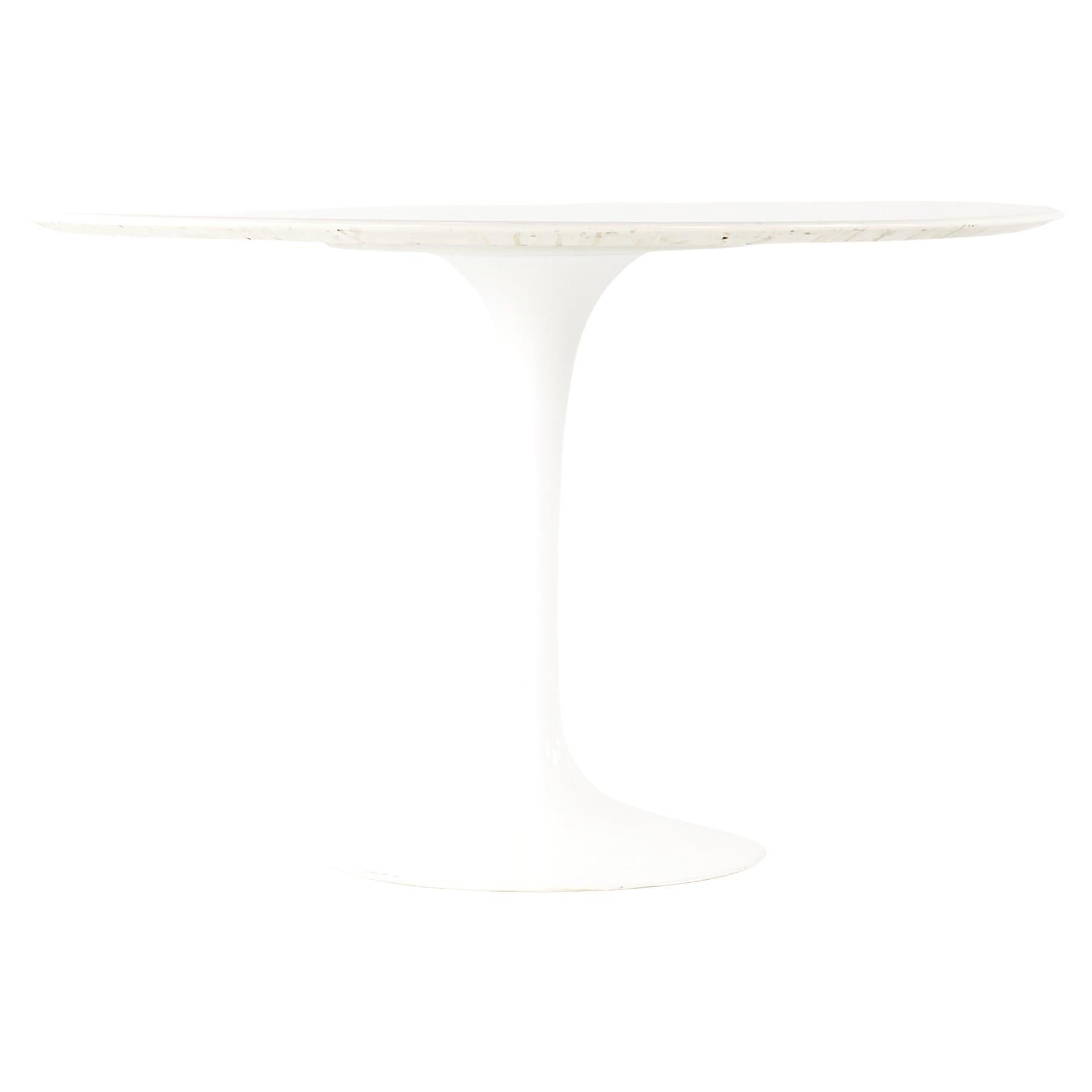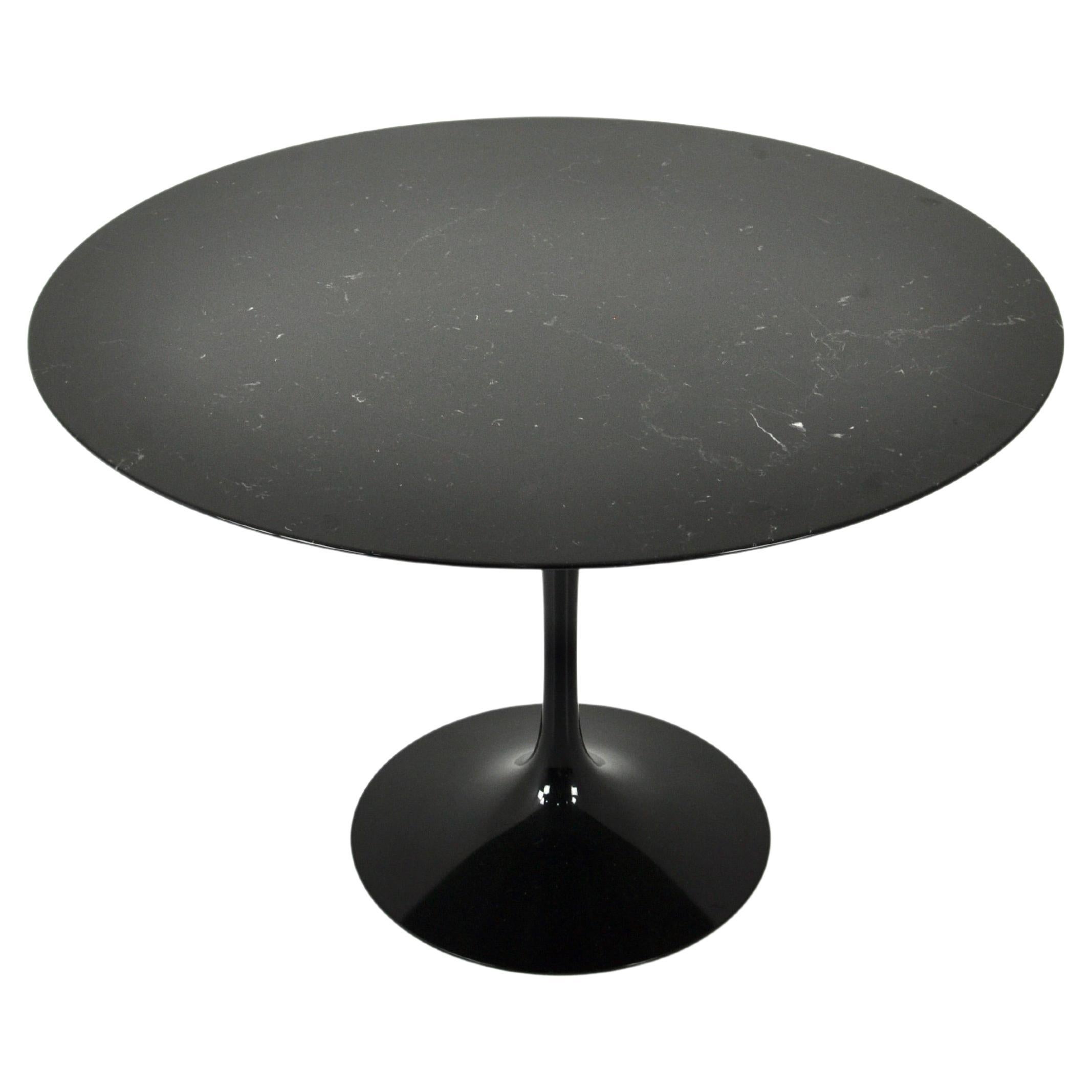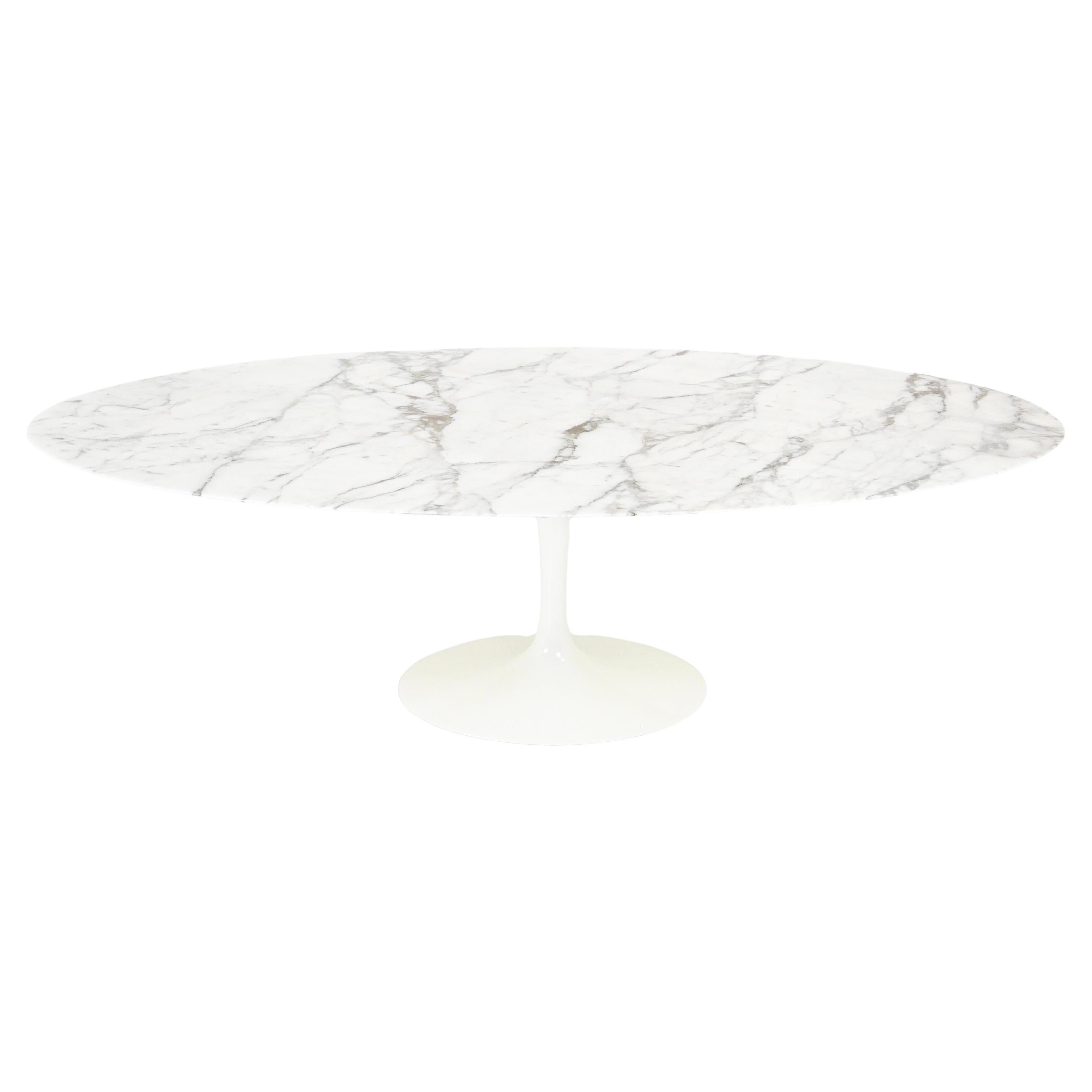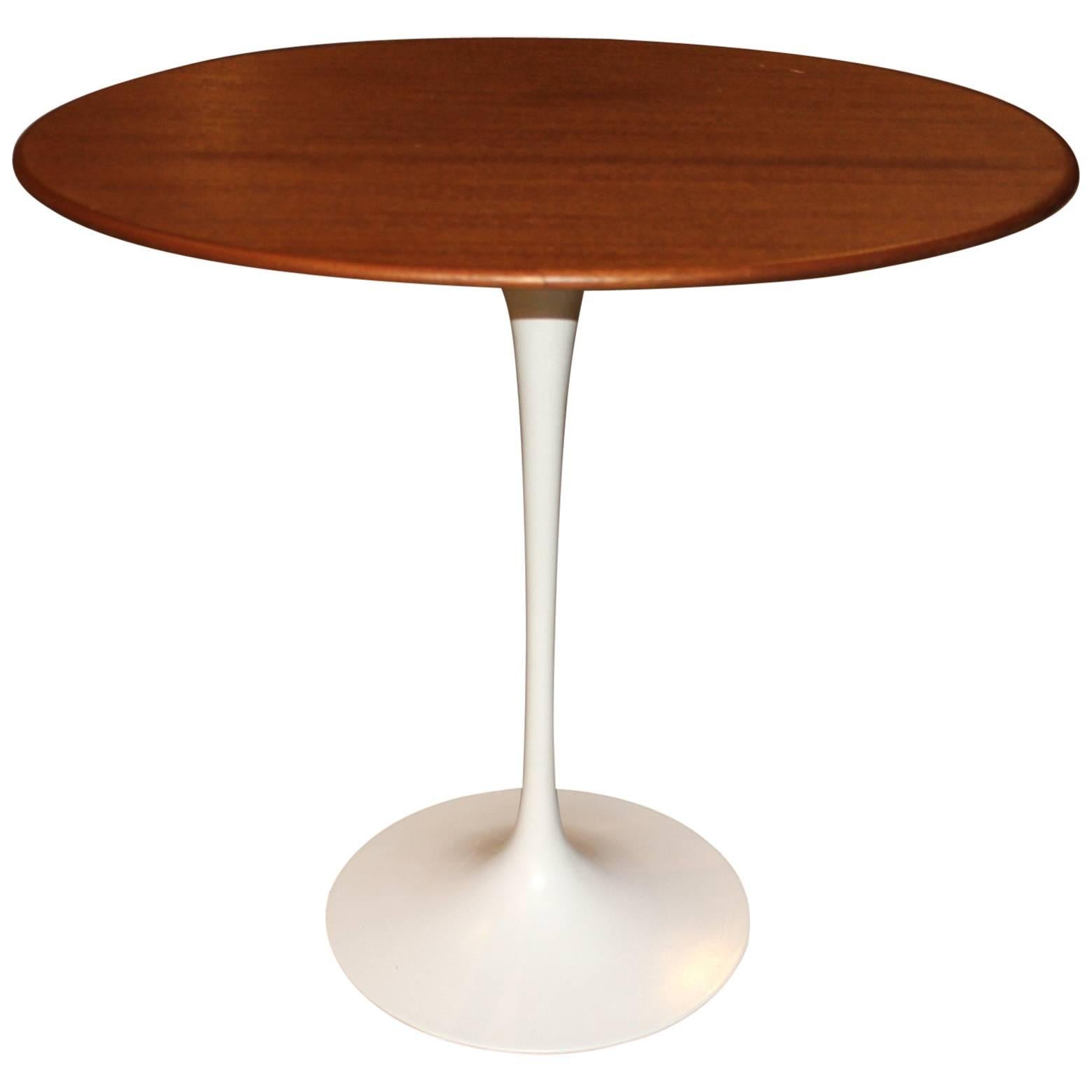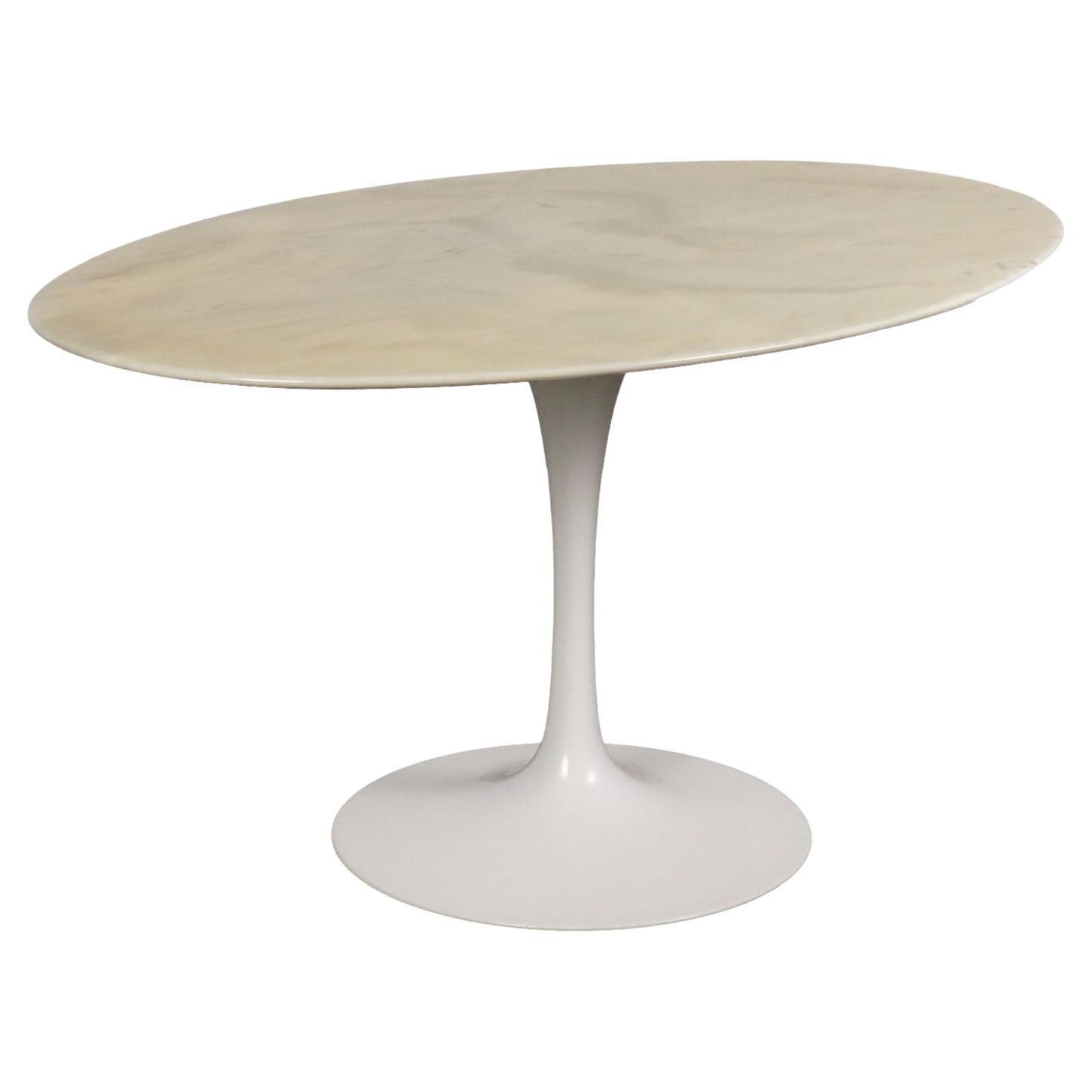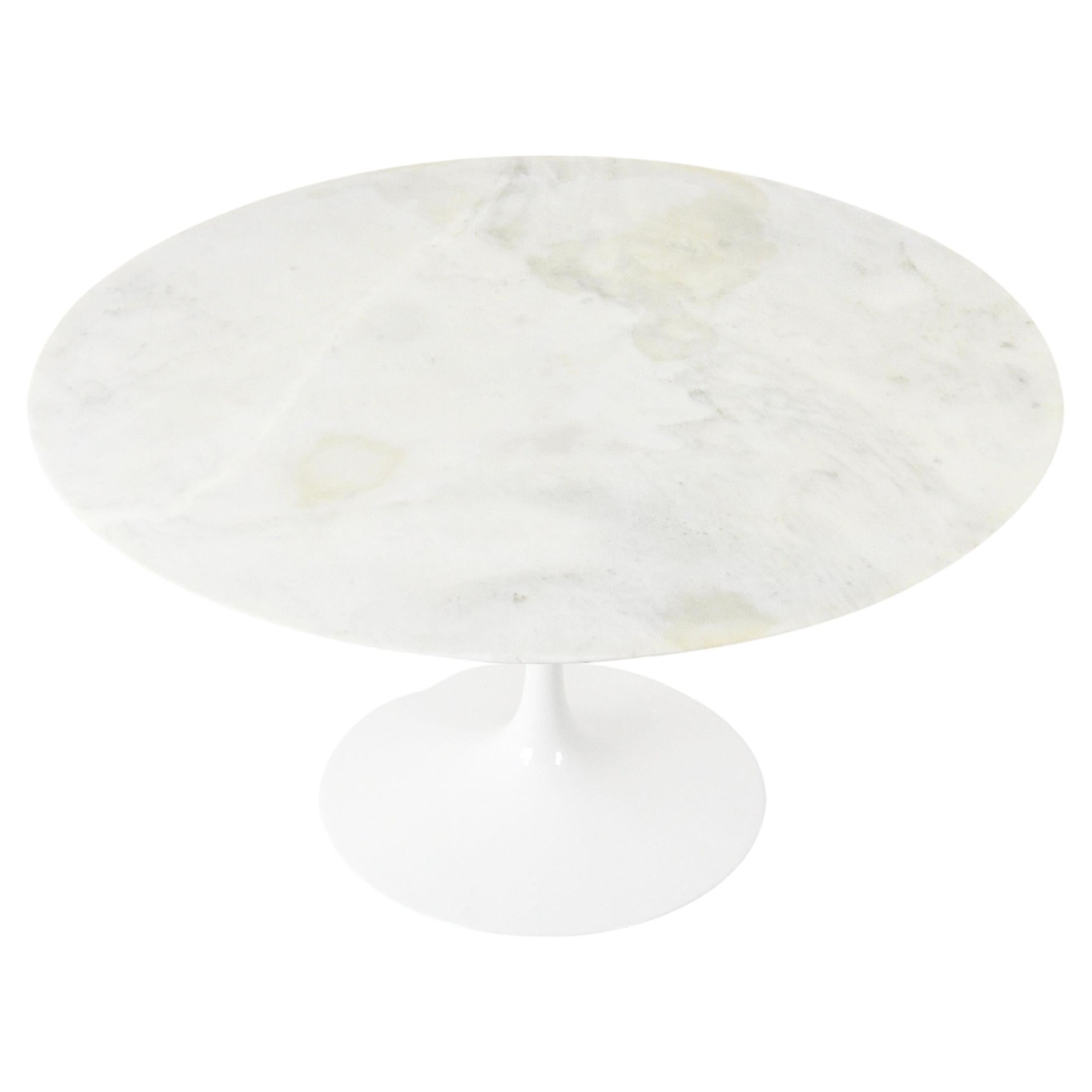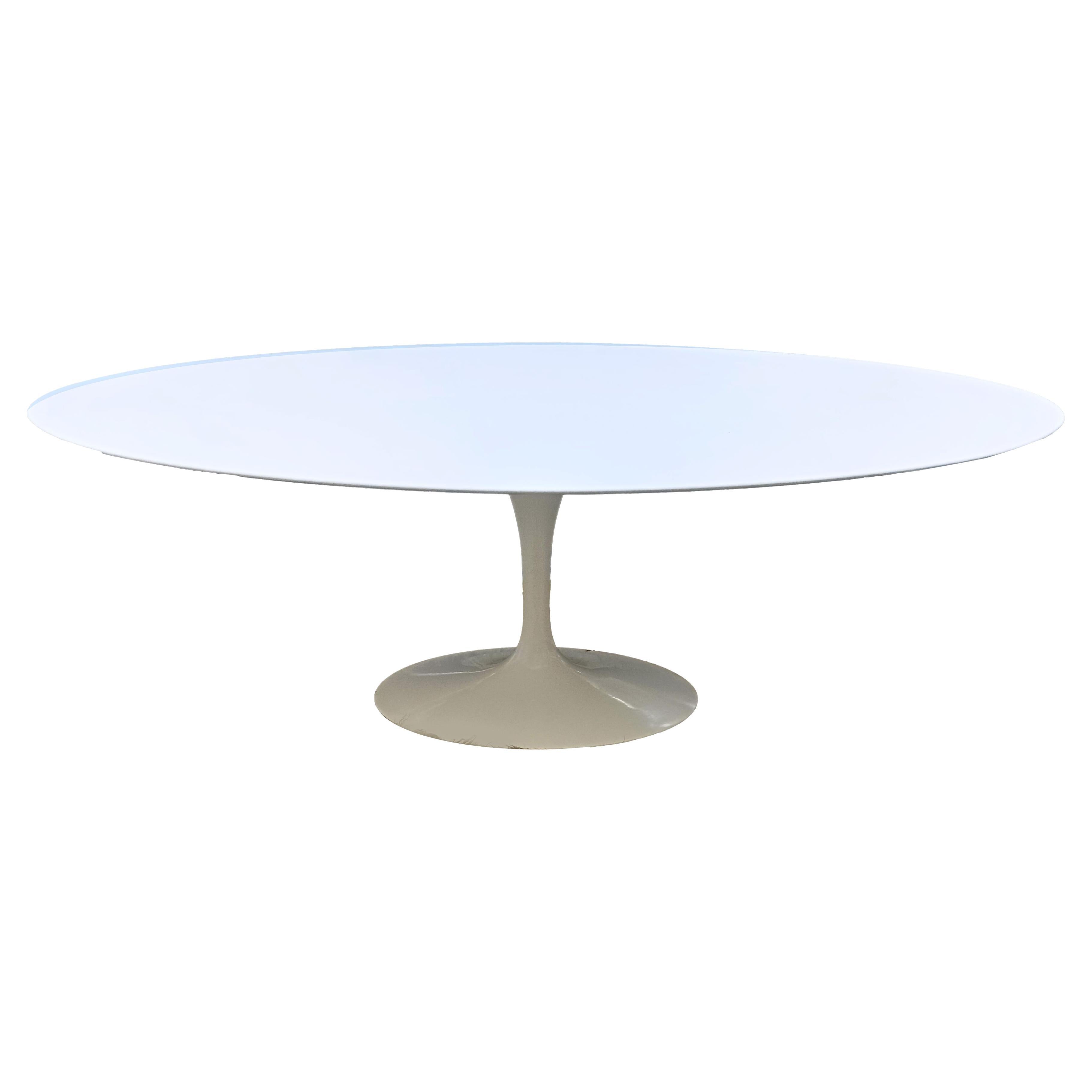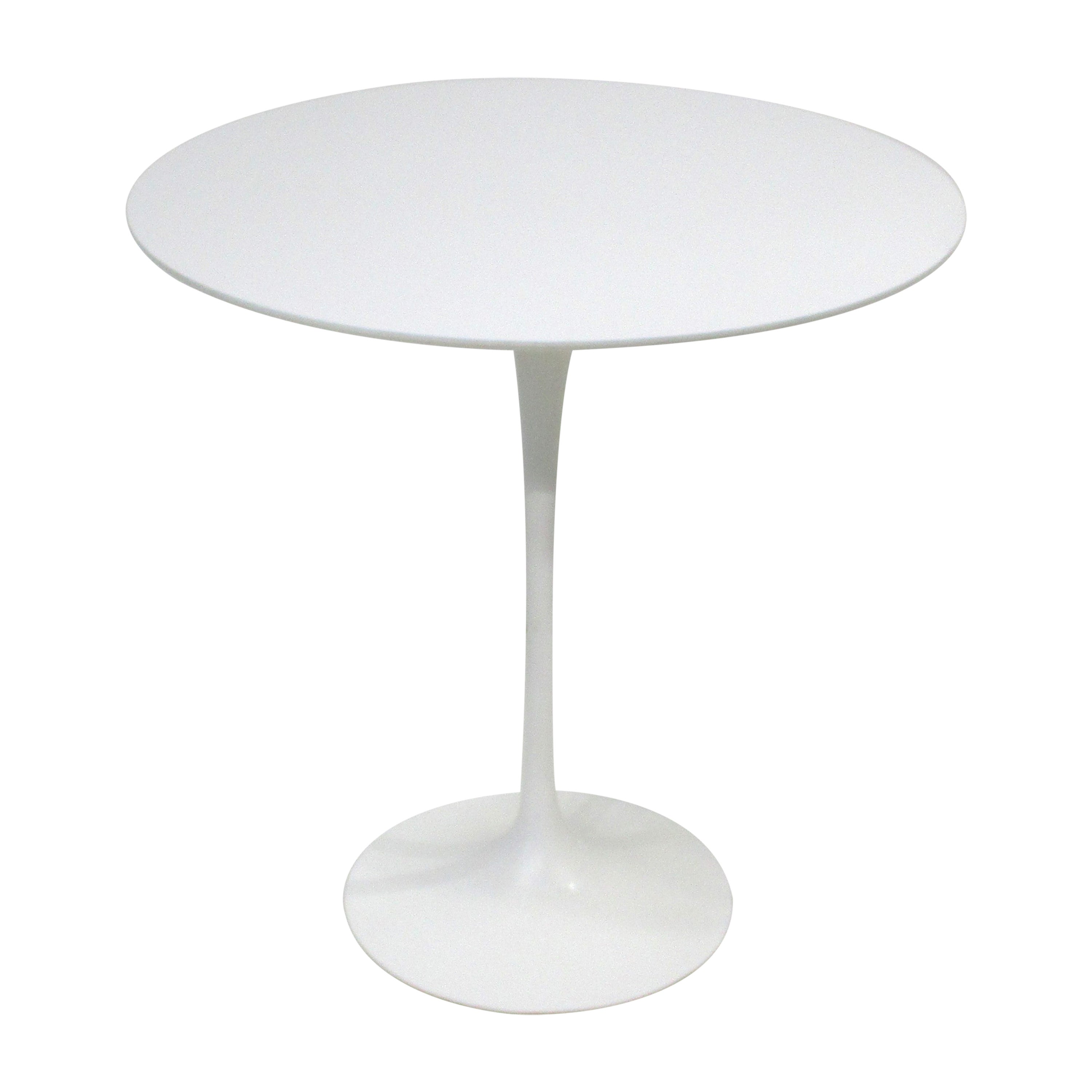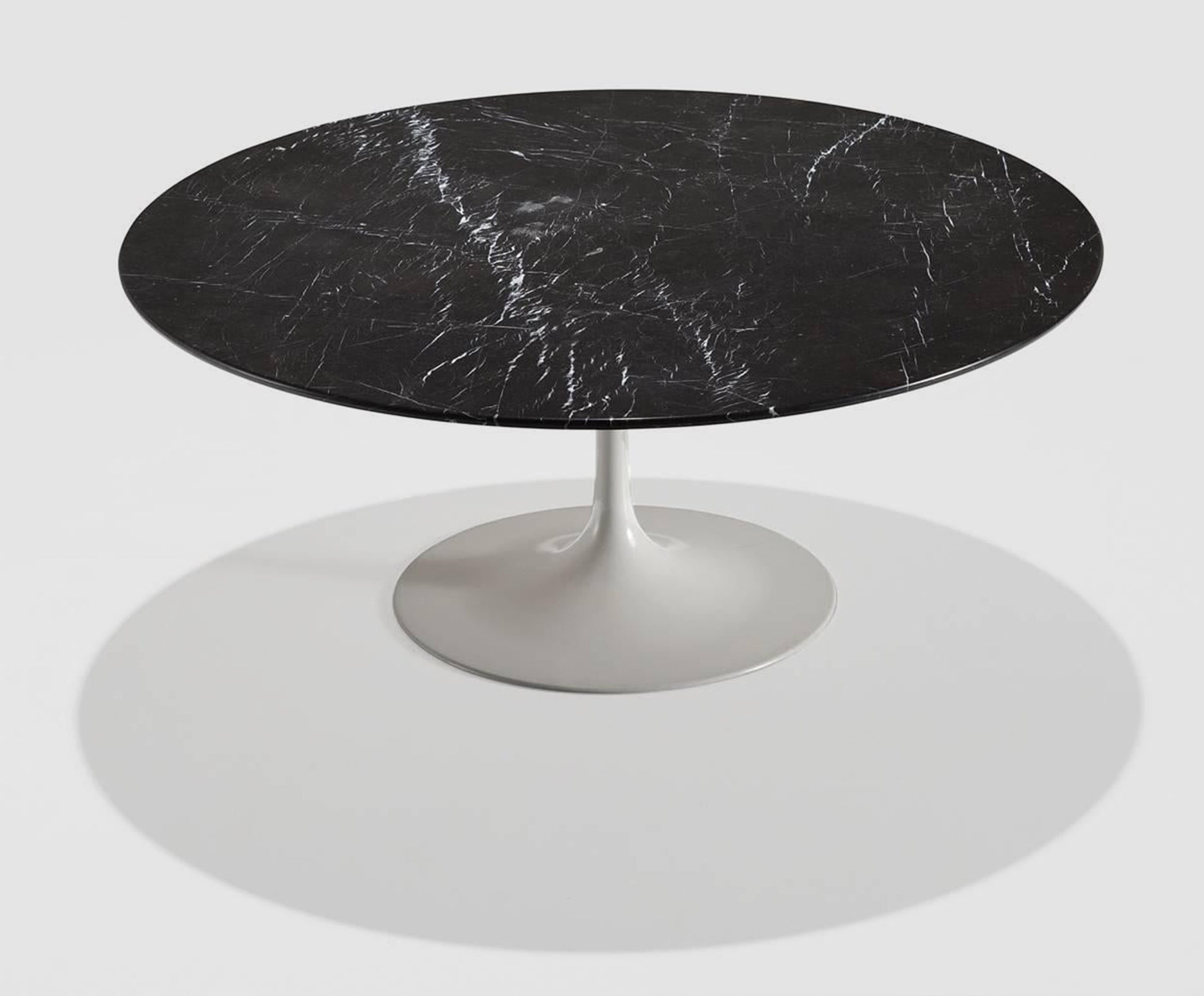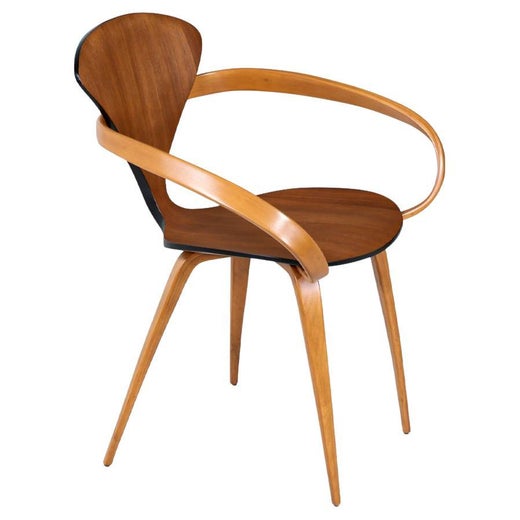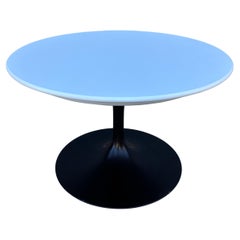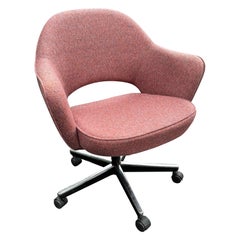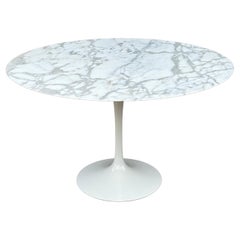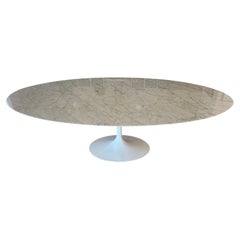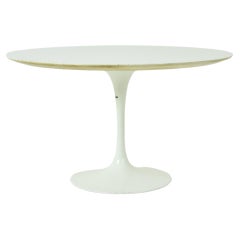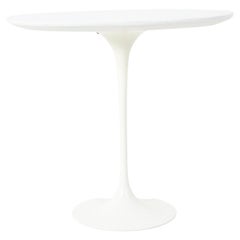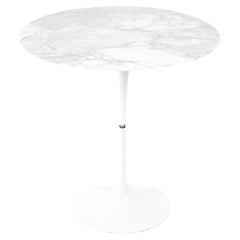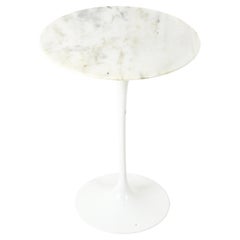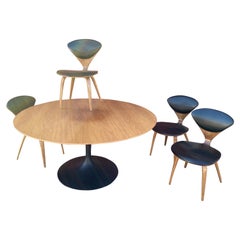
Eero Saarinen for Knoll Game Table and 4 Norman Cherner Side Chairs
View Similar Items
Eero Saarinen for Knoll Game Table and 4 Norman Cherner Side Chairs
About the Item
- Creator:Norman Cherner (Designer),Eero Saarinen (Designer)
- Design:Saarinen Pedestal TableSaarinen Pedestal Series
- Dimensions:Height: 26.5 in (67.31 cm)Diameter: 54 in (137.16 cm)
- Sold As:Set of 5
- Style:Mid-Century Modern (Of the Period)
- Materials and Techniques:Iron,Plywood,Walnut
- Place of Origin:United States
- Period:1960-1969
- Date of Manufacture:1963
- Condition:Wear consistent with age and use. Minor fading. Top shows sun fading.
- Seller Location:Philadelphia, PA
- Reference Number:1stDibs: LU843027554952
Pedestal Table
Finnish-American architect and furniture maker Eero Saarinen (1910–61) declared that he “wanted to clear up the slum of legs” crowded beneath tables. Enter his Pedestal collection, which Knoll launched in 1958. The collection included armchairs, stools and tables of various sizes all balanced on a single supporting leg.
Saarinen got his start in furniture as a student at Michigan’s Cranbrook Academy of Art, where his father, architect Eliel Saarinen, was director. Some of Eero’s earliest work was designing furniture for Kingswood, a Cranbrook school for girls that opened in 1931. The pieces included a table with four gathered legs in order to make room for both people and chairs’ legs.
At Cranbrook Academy, Saarinen met Florence Knoll, who would become a lifelong friend and professional partner, especially when she was leading the Knoll furniture company. He also met fellow designer Charles Eames, and — with support from Ray Eames — they created the molded plywood Organic chair, which placed first in the 1940 Organic Design in Home Furnishings competition organized by the Museum of Modern Art in New York. As with Saarinen’s future practice, the Organic chair was emblematic of a design approach that was informed by a consideration of the human body as well as the possibilities of new machine processes.
Although America’s involvement in World War II disrupted plans to manufacture the Organic chair, Saarinen continued to explore organic shapes in industrial design. His interest in using seamless plastic forms was clear with his Pedestal series, but the technology was not advanced enough for their stability. Instead, the Pedestal table and its accompanying Tulip armchairs and armless chairs comprised cast-aluminum bases. Each table, stool and chair was crafted with a single, tapered cylindrical leg that descends to a base that flares into a circle, giving the illusion of being one piece. Like his Gateway Arch in St. Louis, the series’ pieces appear to float, and although austere in silhouette, they reflect intense attention to engineering.
The Pedestal table was released with several additional options, including marble and wood veneer for its round and oval tops for dining, side and coffee tables. Because of their modest footprint on a room and streamlined design, these tables can harmonize with nearly any interior style. The design’s status as a mid-century modern classic has inspired numerous imitators, but Saarinen’s original Pedestal table — still manufactured by Knoll — maintains the grace and quality that distinguishes it from the rest.
Norman Cherner
Norman Cherner was an influential designer who explored postwar technological innovations and how to incorporate them into furniture production and architecture. And while its history is complicated, his Cherner chair is one of the most successful examples of mid-century modern molded plywood seating.
Born in New York City, Cherner was an architect and a prolific designer who taught at Columbia University’s Teachers College. An enthusiast of the Bauhaus, he gave lectures in the late 1940s on the principles of the legendary German design school at the Museum of Modern Art.
Cherner was fascinated with the concept of cost-efficient design, and this extended into his pioneering ideas for prefabricated housing. His philosophy was that a modular home should be a complete design concept that included economical furniture and lighting. He published several DIY books, such as How to Build a House for $6,000. Cherner caught the interest of a housing cooperative in upstate New York and was contracted to design and oversee the construction of prefabricated housing in the town of Ramapo. The U.S. Department of Housing assembled a pre-built Cherner home for exhibition in Vienna.
But he is best known for his chair.
In the 1950s, one of George Nelson’s designers, John F. Pile, created the Pretzel chair. It had structural problems and proved too costly to make at Herman Miller, where Nelson was director of design. Production was subcontracted to Massachusetts company Plycraft, but the agreement didn’t last long owing to a dispute between the furniture manufacturers. Based on a recommendation from Nelson, Plycraft sought out Cherner to redesign the chair so that it would be durable and affordable to produce.
Cherner submitted his redesign only to be told that Plycraft had shelved the project. However, Plycraft secretly began producing what would become the Cherner chair under a different name — and Cherner later stumbled across his seat in New York. Cherner sued Plycraft and won. The chair became instantly popular after being featured in a Norman Rockwell illustration for a Saturday Evening Post cover in September of 1961.
Other noteworthy Cherner designs include his Konwiser furniture line, Multiflex storage units and tube lighting. The Museum of Modern Art praised his Konwiser collection as “some of the most progressive furniture designs available to the American public.”
In 1972, Plycraft discontinued production of his chair, and Cherner died in 1987. In 1999, his two sons founded the Cherner Chair Company and began making furniture based on their father's original designs for armchairs, chairs — including the Cherner chair — tables and credenzas.
Find vintage Norman Cherner furniture on 1stDibs today.
More From This Seller
View All2010s American Mid-Century Modern Side Tables
Aluminum
1990s American Mid-Century Modern Office Chairs and Desk Chairs
Metal
2010s American Mid-Century Modern Dining Room Tables
Marble
2010s American Mid-Century Modern Dining Room Tables
Marble, Aluminum
Vintage 1950s American Mid-Century Modern Dining Room Chairs
Upholstery, Wood
1990s American Mid-Century Modern Lounge Chairs
Metal
You May Also Like
Vintage 1960s Central American Mid-Century Modern Tables
Aluminum
Vintage 1960s Central American Mid-Century Modern Tables
Aluminum
Vintage 1960s Italian Mid-Century Modern Tables
Marble, Aluminum
Vintage 1960s Italian Mid-Century Modern Tables
Marble, Aluminum
Vintage 1970s American Mid-Century Modern Dining Room Tables
Metal
2010s Central American Mid-Century Modern Dining Room Tables
Carrara Marble, Aluminum
